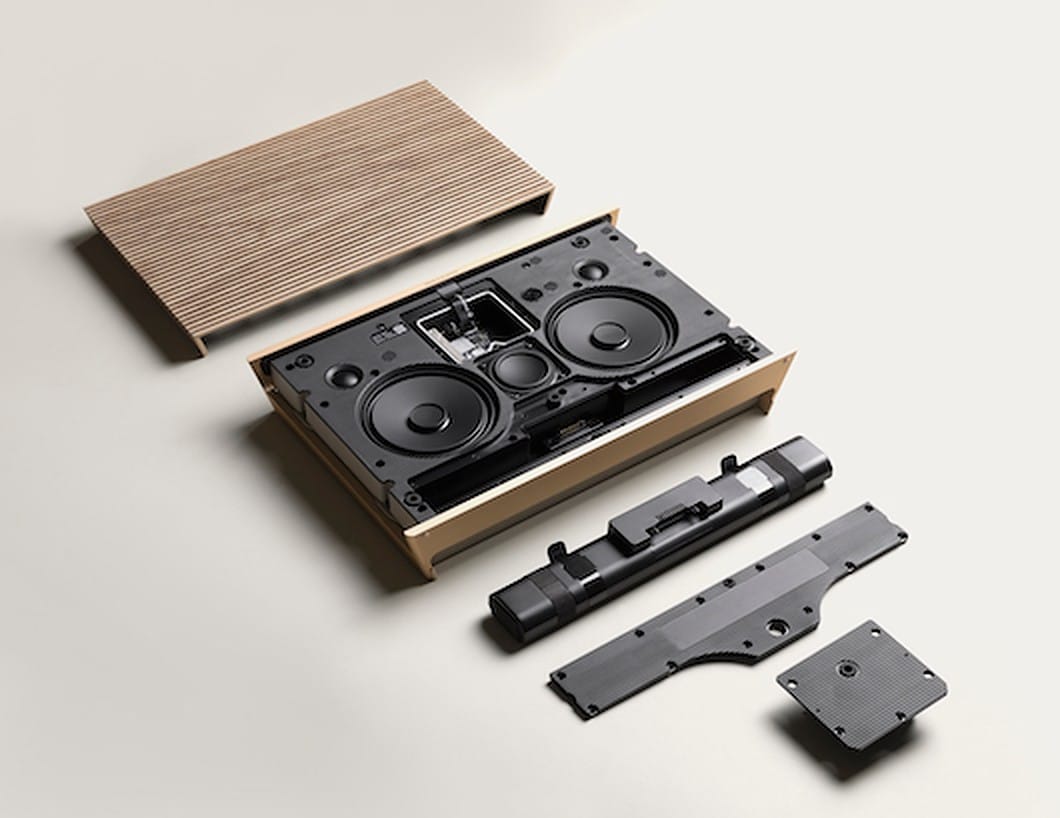Beosound Level, a product of Bang & Olufsen, is the first speaker in the consumer electronics sector to be able to boast the important Cradle to Cradle® certification. The Northern European company will also be among the protagonists of the Danish installations – for the Milan Design Week 2021 – designed by Lendager Group at Rossana Orlandi’s TrashFormation Village, where she will present her journey into the heart of modular design.
Bang & Olufsen: the satisfaction of the Struer factory
“This certification – says Mads Kogsgaard Hansen, Senior Global Product Manager for Classics & Product Circularity – is an important step because it clearly shows that it is not impossible for the industry to work towards the goal of extending the life cycles of products and consequently significantly reduce electronic waste. Bang & Olufsen (..) intends to make a full commitment along the entire value chain to reverse the trend of the increase of electronic waste on a global scale, helping to transform the sector in a positive way starting from the reduction of its impact on the planet ”.
Not the only certification obtained
Bang & Olufsen itself appears among the first companies to have obtained the most recent certification according to the Cradle to Cradle Certified Version 4.0 standard, the system of parameters that defines the most challenging (but still feasible) criteria for designing and manufacturing ready-made products. from now to the challenges of a sustainable tomorrow.
Specifically, the “Cradle to Cradle”
The Cradle to Cradle Certified Product Standard of the Cradle to Cradle Products Innovation Institute has long been considered the most advanced and reliable scientific standard for the design and manufacture of electronic instruments that aim to maximize the level of well-being for people and the planet. The fourth version of the Cradle to Cradle Certified introduces new requirements that deepen all the categories of performances examined. The ultimate goal of the Cradle to Cradle philosophy is to create a self-sufficient system in which materials are seen as nutrients that circulate in closed loops, and ultimately help program the amount of waste.
The consumption and production trends on electronic waste
In 2019, the amount of e-waste produced globally was 44.4 million tons (Mt) and is expected to rapidly increase to 77.4 (Mt) by 2030 (The Global E-waste Monitor 2020). This growing amount of e-waste has its causes in higher consumption rates for electrical and electronic equipment, driven primarily by ever-changing trends, but also by shorter product lifetimes and increasing obsolescence (Eurostat , 2019a). One of the recommendations for reversing this phenomenon in the consumer electronics industry is to extend the life of electronic devices (eea europa).
Designing long-lasting products has always been a goal for Bang & Olufsen, but this aspiration has been challenged by the exponential increase in technological development. For Bang & Olufsen, the Cradle to Cradle certification paves the way for more rigorous and measurable measures to reverse this trend so that its customers feel motivated to protect, repair and upgrade both hardware and software so they can enjoy the their music long and smoothly.
Bang & Olufsen: Beosound Level, the characteristics of duration
Beosound Level is a portable Wi-Fi speaker designed with a modular approach, facilitated by the fact that the same design principles that Bang & Olufsen has developed throughout its long history have been employed. It is a speaker that is easy to maintain, maintain and repair – in fact, its durability extends beyond industry product standards.
Once reached the end point of useful life, after many years of service, Beosound Level supports a resource efficient recycling process thanks to the ease of disassembly and the use of high quality materials, including polymeric materials of the structures, post-consumer recyclable.















Leave a Reply
View Comments